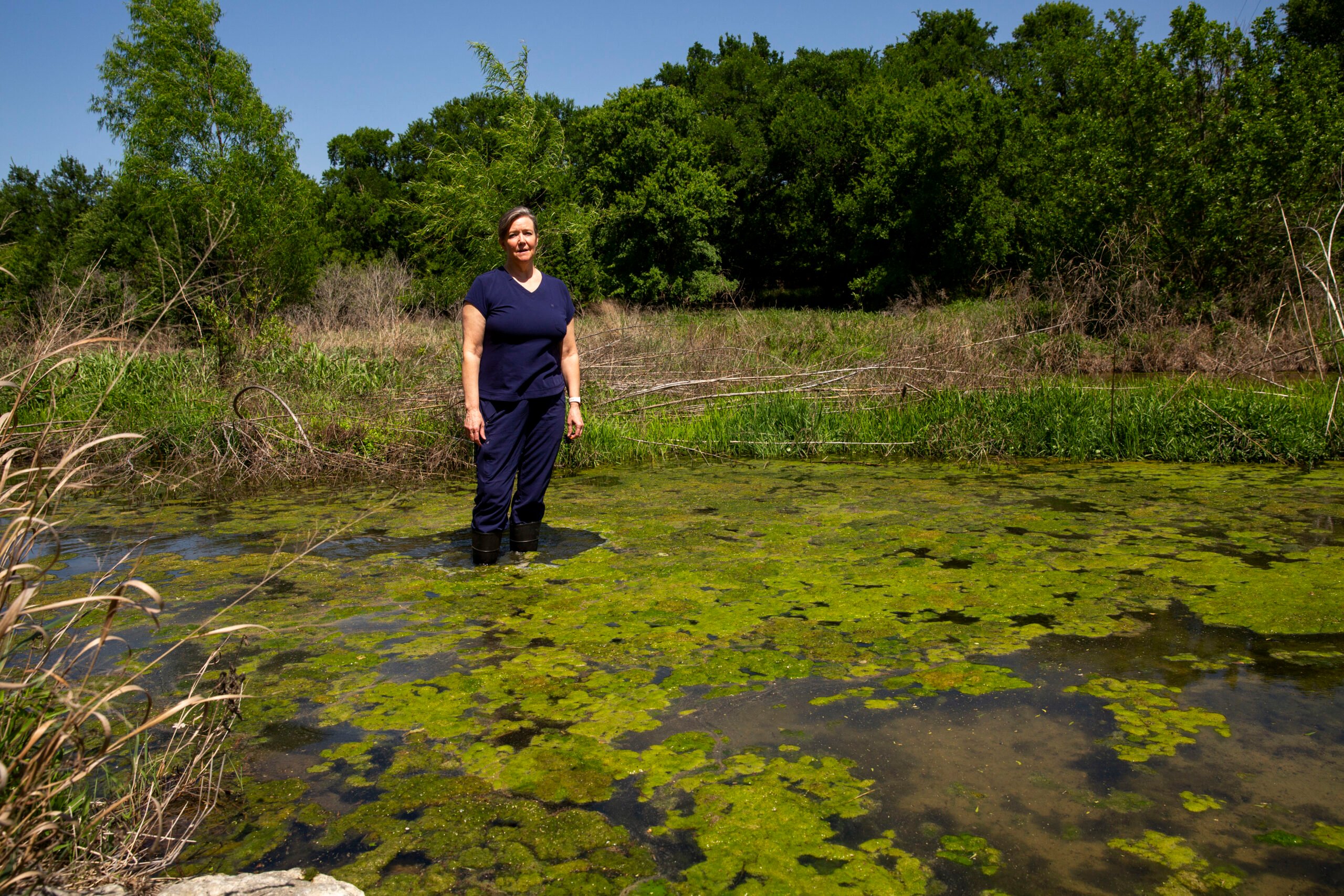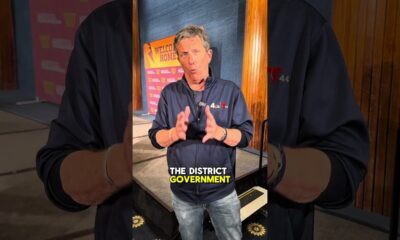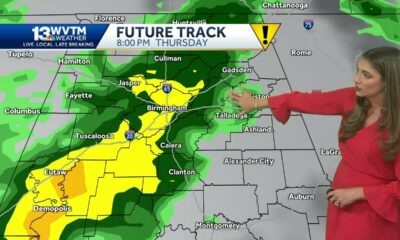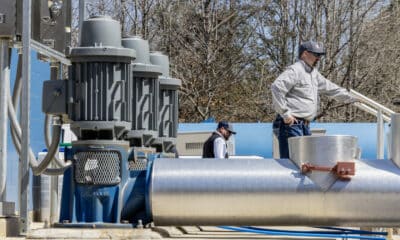News from the South - Texas News Feed
What to know about your immigration rights with ICE and police
Immigration crackdown in Texas: What you need to know about your rights
“Immigration crackdown in Texas: What you need to know about your rights” was first published by The Texas Tribune, a nonprofit, nonpartisan media organization that informs Texans — and engages with them — about public policy, politics, government and statewide issues.
Sign up for The Brief, The Texas Tribune’s daily newsletter that keeps readers up to speed on the most essential Texas news.
President Donald Trump’s rapid-fire actions targeting undocumented immigrants nationally — which included immigration enforcement operations in the Austin, Dallas-Fort Worth and San Antonio areas in recent days — have sparked questions and concerns for immigrants, especially those who are in the country illegally. Here’s what immigration attorneys and experts say you should know about immigrant rights and resources.
What do the Trump administration’s actions mean for immigrants?
One of the most significant changes is the expansion of expedited removals, which allows the U.S. to deport someone without a hearing before an immigration judge, said immigration attorney Sebastian Simon, whose firm has offices in New York and Houston. Typically, expedited removals are used at or near the border, but Trump expanded it to apply to undocumented immigrants anywhere in the U.S. who have been in the country for less than two continuous years, he said.
This is not the first time Trump has fast-tracked deportations, and the American Civil Liberties Union has once again sued the administration to halt expedited removals.
Immigrants temporarily allowed to come into the U.S. through what is known as humanitarian parole could also face expedited removal, Simon said.
Right now, federal immigration agents appear to be focusing on people with outstanding removal orders and criminal records, Simon said, but any undocumented immigrants they encounter could also be apprehended. Trump recently signed a new law that requires the Department of Homeland Security to detain unauthorized immigrants who have been accused of committing even minor crimes, such as shoplifting or theft.
Simon said immigrants with temporary protected status and those in the Deferred Action for Childhood Arrivals program continue to have protection from deportation as long as they are not convicted of a crime. Still, he recommends that people in those programs try to adjust their immigration status if possible.
Lawfully present immigrants such as legal permanent residents, visa holders and refugees or asylees can also face deportation if they are convicted of deportable crimes, which are typically serious crimes but can also include drug-related criminal offenses.
Can authorities detain people in churches and schools?
The Trump administration canceled policies that limited arrests of immigrants in sensitive locations like schools, churches and hospitals.
Gov. Greg Abbott previously ordered Texas hospitals and clinics to ask patients to disclose their immigration status, but patients do not have to respond, according to the ACLU and other advocacy groups. And Abbott’s order said patients should be informed that their care shouldn’t be affected because of their response.
What precautions can undocumented immigrants take?
Immigrants can take the following precautions to prepare in case they encounter authorities:
Stay informed. Make sure you get information from reputable news sources and trusted immigration attorneys or organizations such as the National Immigrant Justice Center.
Learn your rights. Organizations such as the American Civil Liberties Union of Texas or Catholic Charities of Central Texas offer training on immigrants’ rights.
Hire or talk to a qualified attorney. Simon recommends avoiding notaries or other individuals who bill themselves as immigration consultants, who may be able to help you fill out forms but cannot provide legal advice.
Have your documentation ready. In case there’s an emergency, Simon said immigrants should have the following in a safe place and put scanned copies on their phone:
- Proof of identity (a passport, consulate ID, work permit, green card, etc.).
- Immigration or USCIS case documents such as applications for a visa, asylum, temporary protected status or DACA.
- If applicable, proof that they’ve been in the country for two continuous years to avoid expedited removal. This can include lease agreements, utility bills, medical records, tax or school records, or a valid work permit.
- Other legal documents, including birth certificates and marriage licenses.
Have a family plan in case of arrest. Families should prepare:
- An emergency contact list with family members, friends and others who may be able to help.
- Contact information for an immigration attorney or legal aid organization, plus the number of their home country’s consulate or embassy.
- A notarized document detailing who is authorized to take care of their children, pets, property and bank accounts, including a power of attorney to allow someone to handle their finances, sign documents and make decisions on their behalf if they are detained.
- Family members should know who to go to and where to find important documents if someone in the family is detained, and children should know who to contact in case they’re separated from their parents.
What rights do undocumented immigrants have?
Under the U.S. Constitution, immigrants have these rights when interacting with authorities:
- The right to remain silent by saying “I wish to remain silent.” Texas law requires anyone who is arrested or detained to give their name, date of birth and address, but they don’t have to answer other questions.
- The right to refuse an officer entry to their home without a valid search or arrest warrant signed by a state or federal judge (not an immigration court judge).
- The right to hire an attorney.
- The right to request an interpreter if they face removal proceedings.
Maria Cordero, an ACLU of Texas policy and advocacy strategist, said that for a search warrant to be valid, it must be signed by a state or federal judge and needs to include the name of the individual whose residence is to be searched and a specific address (an apartment complex address isn’t enough for example, it must include the unit number).
Civil rights and immigrant rights organizations such as the ACLU of Texas recommend asking the officer to slide the warrant under your door or to display it through a window before allowing agents to enter a home.
What should immigrants do if officers come to their work?
If immigration officials or police go to a workplace, Cordero said, immigrants also have the right to remain silent and not answer officers’ questions. Employers can ask officers to remain in public areas and request to review any documents or warrants officers may have, Cordero added.
What should immigrants do if they are stopped in their vehicle?
If an immigrant is pulled over by police and doesn’t have a driver’s license, Cordero said they can say they don’t have a license, but don’t have to tell the officer why or disclose their immigration status.
Read more about immigrants’ rights in various situations from the ACLU of Texas. In any situation, Cordero said it’s important for immigrants to remain calm to avoid escalating the situation.
What resources are available for immigrants?
There are many organizations that offer legal aid to immigrants in Texas, including:
- American Gateways
- Catholic Charities, which has various chapters throughout the state
- Texas RioGrande Legal Aid
- Border Immigration Law & Justice Center
- Justice for All Immigrants
- Justice for Our Neighbors North Central Texas
- Austin Region Justice for Our Neighbors
- RAICES (Refugee and Immigrant Center for Education and Legal Services)
Consulates and embassies from immigrants’ home countries may also offer assistance. For example, Mexico launched an app called ConsulApp Contigo for its citizens in the U.S. to learn about their rights and to alert their emergency contacts and consulate if they are detained with a push of a button. The app is available for both Apple and Android users.
You can find a list of consulates and embassies and contact information for them through the Texas Secretary of State’s website.
This article originally appeared in The Texas Tribune at https://www.texastribune.org/2025/01/31/texas-ice-immigration-know-your-rights/.
The Texas Tribune is a member-supported, nonpartisan newsroom informing and engaging Texans on state politics and policy. Learn more at texastribune.org.
News from the South - Texas News Feed
Dish Soap: The Versatile Cleaning Hero You Didn’t Know You Needed
SUMMARY: Dish soap is a versatile cleaning tool that goes beyond washing dishes. It can remove hair dye from skin, clean makeup brushes, reduce condensation on windows, stop squeaky doors, and even clear clogged drains. Dish soap works as a gentle insecticide for plants and is effective for cleaning various surfaces. Consumer Reports highlighted top picks, with Dawn Ultra praised for its suds and Gain Ultra Clean for affordability. However, dish soap shouldn’t be used in dishwashers or washing machines as it creates excess suds that can damage appliances. Additionally, excessive use on skin or hair can strip natural oils.

Discover the incredible versatility of dish soap, a kitchen staple that does more than just cut through grease. Consumer Reports unveils how this soapy superhero can tackle a variety of messes around your home, making it the secret weapon hiding in plain sight.
News from the South - Texas News Feed
Mostly cloudy, slight chance of storms west of SA tonight
SUMMARY:
Title: Mostly cloudy, slight chance of storms west of SA tonight.
Summary: Good Monday morning! I’m meteorologist Justin Horn sharing the forecast. Today will be mostly cloudy with temperatures near 90. Although there’s a slight chance of showers tonight due to potential storms from Mexico, it’s unlikely to impact the river parade. Tomorrow should remain quiet, but expect increased rain chances midweek, particularly Wednesday evening with possible strong thunderstorms. A 40% chance of rain is forecast for Wednesday, along with similar chances on Thursday and Friday. Stay weather-aware, especially with ongoing Fiesta events, but no need to cancel plans.

Better chances of rain by midweek.
News from the South - Texas News Feed
In Booming Central Texas, Wastewater Is Polluting Rivers and Streams
Editor’s Note: This article originally appeared at Inside Climate News, a nonprofit, independent news organization that covers climate, energy, and the environment. It is republished with permission. Sign up for their newsletter here.
Margo Denke set out to rally the town when she learned that a Christian youth camp planned to build a wastewater treatment plant and discharge its effluent into the pristine Hill Country creek that ran through her small ranch.
Denke, a 1981 graduate of Harvard Medical School who moved to the Hill Country in 2013, printed fliers, put them in Ziploc bags and tied them to her neighbors’ cattle gates in the tiny community of Tarpley, population 38. A coalition of families pooled resources, hired a lawyer and dug in for a yearslong battle.
Theirs was one of many similar struggles that have unfolded in recent years across Central Texas, where protection of creeks and rivers from treated wastewater discharge often falls to shoestring community groups as an onslaught of population growth and development pushes ever deeper into the countryside.
“All this would have been destroyed,” Denke said in April as she surveyed a spring-fed stretch of Commissioners Creek. “Raising the money to fight this is not easy. But you have to, you can’t let this just slide by.”
Eventually, the camp owner, who did not respond to a request for comment from Inside Climate News, agreed in settlement negotiations not to discharge into the creek. Instead, they would spray their treated effluent over their own property—an increasingly popular means of wastewater disposal. In exchange, the neighbors would drop their opposition to the two-story dam the camp erected for a private lake and waterpark on little Commissioners Creek.
“I’m trying to stay positive about it,” Denke said. “It was a huge win.”
But the battle never ends amid the rapid pace of development in Texas. Several miles downstream, another subdivision developer wants to treat wastewater and discharge it into Hondo Creek. And in a neighboring watershed, another community group recently stopped another Christian youth camp from discharging into the Sabinal River.
Similar stories repeat throughout Central Texas, where two decades of booming population growth have come with a massive increase in domestic wastewater—mostly human sewage. The effluent from wastewater treatment plants appears clean and clear, but it contains high levels of organic nutrients that can cause algae blooms and devastate native aquatic ecosystems when dumped into streams and rivers.

“Unfortunately, society at large has no idea,” said Jeff Back, a staff scientist at Baylor University who has studied nutrient pollution in Texas waterways for 20 years. “Developers want to continue to do their business, but they need to be responsible.”
Now, as the state Legislature meets for its biennial session, advocates for water protection are supporting a bill that would prohibit most new discharges of treated wastewater into the state’s last 21 stretches of pristine rivers and streams, as defined by measured nutrient levels. Filed by state Sen. Sarah Eckhardt, a Democrat from Austin, it’s the latest iteration of a bill that groups have tried repeatedly without success to pass in Texas.
It wouldn’t ban development along pristine streams. It would just require other outlets for treated wastewater beside the natural waterways. Plenty of solutions are available on the market, from systems for onsite re-use to treatment methods that remove the nutrients from wastewater.
“People have to understand that it’s not going to be free,” Back said. “People want to do everything as cheaply as possible.”
The luxury of doing things cheaply might not last forever. As Texas cities begin to outgrow their water supplies and state leaders increasingly recognize shortages looming on the horizon, there may come an end to the days of showering lawns with drinking water while dumping treated effluent into rivers for disposal.
“This effluent should be considered a resource, not a nuisance to get rid of,” said David Venhuizen, a civil engineer in Austin who sells hardware for on-site water reuse.
It could be used to irrigate and fertilize the turf grass of parks, sportsfields, golf courses and private lawns, which make up the bulk of municipal summertime water use in Texas. In existing cities, such reuse has proven prohibitively expensive because plumbing from wastewater treatment plants is expensive to run out to individual customers.
New development, however, could be built to incorporate on-site wastewater reuse, said Venhuizen. His system, buried underground like a septic system, can treat a household’s wastewater, then drip it beneath the lawn. It could also be adapted at neighborhood scale for subdivisions to create a decentralized network of wastewater treatment and local redistribution.
But the breathless pace of suburban sprawl in Texas leaves no time to pause and make systemic changes. Instead, Texas cities run pipelines to distant aquifers to meet the ever-growing needs of new neighborhoods that will use most of their drinking water on lawns while piping away their effluent for treatment and discharge into a creek.
“We’re going to continue to rely on extraction instead of any regenerative kind of water systems,” said Venhuizen, 78, on a rocking chair in his backyard fitted with rainwater collection tanks and covered in native plants. “The madness has to stop.”
Stephanie Morris bought a house on the South Fork San Gabriel River, 27 miles north of Austin, in 2013. She wouldn’t have done it if she knew what the beautiful river would become.
When she and her family moved in, Morris said, the neighbors were already exhausted by a long-running battle with the neighboring city of Liberty Hill over its discharge of treated wastewater into the river about a quarter mile upstream.
Back then, Liberty Hill had about 1,000 residents, and its discharge created relatively minor algae problems in the river. Then its population exploded, like many other small cities of Central Texas. Now almost 15,000 people live in Liberty Hill, most of them relying on the South Fork San Gabriel for their wastewater disposal needs.
“There’s a hell of a lot more people pissing in the pond,” said Morris, a high-risk labor and delivery nurse, as she trudged through the green, mucky river in high rubber boots. “Every year things would get worse as their volume increased.”
All those nutrients, primarily from human waste, have caused the riverbed to choke up entirely with algae at times, extending three to five miles downstream and burying native ecosystems. When the algae dies, it sinks and rots in heaps of black, stinking muck.
Year by year, Morris became increasingly involved, until she spent all of her free time trekking the riverbed and taking photos of the destruction to show to her elected representatives, commissioners of the TCEQ and judges at the administrative law courts in Austin.
As a result, the TCEQ has twice reduced the concentrations of phosphorus that the Liberty Hill plant is permitted to discharge, although its overall volume continues to increase. The river looks better today than it did several years ago, Morris said. But the fight has nearly exhausted her.
“This has cost so much time and money, it’s not even funny,” she said. “Private citizens should not have to be enforcing the environmental standards of the state.”
The story of the South Fork San Gabriel, and the pictures that circulated online, jolted other communities to fight against proposed discharges in their areas, said Annalisa Peace, executive director of the Greater Edwards Aquifer Alliance, a group that helps its member organizations challenge the proposed discharge permits in the 21 counties that overlie the Edwards and Trinity aquifers.
“It’s incumbent upon the citizens and GEAA to raise the money for the legal fees to do all this,” Peace said. “It seems to be that the burden is placed on the average citizen.”
Most new wastewater sources come from new housing subdivisions and the municipal utility districts that are established to serve them, she said. Others are commercial projects, from summer camps to music venues, that plan to treat their own wastewater. Much of the new construction, especially near pristine streams, takes place outside of any city’s jurisdiction so it faces little regulation or oversight.
Previous attempts to pass statewide regulations of discharges into waterways have repeatedly failed, said Peace, who has worked with GEAA for 20 years. Much of the resistance comes from lobbying by major homebuilding companies that are making big money off explosive population growth in Texas.
“It’s the big nationals that we’re really seeing the most intransigence and the most organized opposition from,” she said. “They don’t like regulation.”
The Texas Association of Builders declined to comment on this report.
Peace wishes for a law increasing treatment standards for wastewater discharge into all Texas waterways. But she’ll settle for the current bill, which protects just the remaining pristine segments, and provides exemptions for cities and river authorities.
Outside the Texas Legislature, groups have had more success challenging individual permits. Such was the case on the Upper Sabinal River, where another Christian youth camp, operated by the national nonprofit Young Life, proposed in 2019 to build a wastewater treatment plant that would discharge into the river. Local landowners rallied. They gathered 25,000 signatures on a petition and hired a lawyer to challenge the discharge permits.
Faced with an extensive delay in state administrative courts, Young Life opted to settle instead. Young Life did not respond to a request for comment.
“Once this became a high-profile issue, they were willing to look at alternatives,” said Jeff Braun, a landowner on the upper Sabinal River and a spokesperson for the Bandera Canyonlands Alliance, which fought the permit. “I think it hit a chord with a lot of people that are native Texans because they all love these iconic streams.”
In an announcement of the settlement agreement in August 2021, Young Life said it would reuse most of its wastewater on-site for irrigation rather than discharging into the river. Regulators call this practice “land application,” and it’s growing in popularity.
By banning discharges into pristine streams, the bill in the Legislature would effectively force developers in those areas to use land application for wastewater disposal. Although the practice is less impactful to waterways than direct discharge, it can still do damage.
Mike Clifford, technical director at the Greater Edwards Aquifer Alliance, said that opposition from community groups has already pushed many developers to seek land application permits.
“The problem now is we just have too many of these,” he said. “They’re popping up everywhere.”
The TCEQ has issued 413 active permits for land application of treated wastewater, according to online records, and 2,374 active permits for discharge.
For example, community groups are currently fighting a planned 10,000-seat amphitheater, luxury hotel and condominium complex on 84 acres nestled next to the Barton Creek Habitat Preserve on Barton Creek, a pristine stream, in Austin. The complex would treat its own wastewater with land application permits to spray up to 120,000 gallons per day of treated effluent onto its property.
Over time, Clifford said, the nutrient pollutants would accumulate until a big rainstorm washes them into Barton Creek. About five miles upstream, on Fitzhugh Road, another proposed 5,000-person music venue wants to treat its own wastewater and discharge it into ponds near Barton Creek.
One solution, Clifford said, would be for Texas to require developers to add nutrient removal to their treatment process.
“It’s just about money,” he said. Nutrient removal “can double the cost of a wastewater treatment plant.”
With adequate investment, plenty of solutions exist. Some could even be configured to make money that covers part of their costs. For example, some treatment systems that remove nitrogen and phosphorus from water do it by growing algae, which could be harvested and sold as fertilizer. To avoid the buildup of nutrients where effluent is sprayed onto land, grasses can be harvested and sold as hay. Irrigation of hay for livestock is the largest water demand driving shortages in parts of Texas and the West.
Eventually, water scarcity will compel urban planners to make use of wastewater rather than dumping into rivers, said Brian Zabcik, advocacy director for the Save Barton Creek Association, which has pushed for discharge protections on Texas pristine streams through several successive legislative sessions.
“It’s crazy that we’re using our highest-quality drinking water to water our lawns and flush our toilets,” he said. “It makes a lot more sense to use recycled wastewater for those purposes.”
Texas might soon have to consider systemic changes as its population continues to boom, temperatures continue to rise, a multi-year drought persists and water shortages approach. Already, changes are beginning in small pockets.
Zabcik pointed to West Texas cities of Big Spring and El Paso, national pioneers in the reuse of treated effluent for drinking water. In Austin, a new city government building features on-site wastewater treatment and recycling for non-potable uses. Consumer products exist to do the same at any home, building or neighborhood.
These aren’t radical practices, said Zabcik, who lives on his grandparents’ ranch in Bell County. Conserving water was part of life for previous generations in Texas. For example, Zabcik said, his grandparents grew a garden, but not with their drinking water; they ran in a pipe from their stock tank. The water from their washing machine drained onto the lawn.
Passing protections on pristine streams won’t ban development along those stretches, Zabcik said. It will just require new approaches to wastewater use. Although they remain costly for now, prices may come down as necessity boosts demand for new affordable products.
The timeline will depend on whether Texas finds the political will to implement new wastewater systems in advance, or if it waits for scarcity conditions to force its hand.
“We’ve got to reuse every drop,” Zabcik said. “It’s really stupid to be wasting wastewater.”
The post In Booming Central Texas, Wastewater Is Polluting Rivers and Streams appeared first on www.texasobserver.org
Note: The following A.I. based commentary is not part of the original article, reproduced above, but is offered in the hopes that it will promote greater media literacy and critical thinking, by making any potential bias more visible to the reader –Staff Editor.
Political Bias Rating: Center-Left
The content reflects a strong focus on environmental conservation, community activism, and the impact of development on natural resources. It presents the struggles of local communities in Central Texas against wastewater discharge into pristine rivers, framing these efforts as necessary for protecting the environment. The mention of political figures such as Democrat Sarah Eckhardt and advocacy for regulatory changes indicates a tendency toward policies aimed at environmental protection, often associated with more progressive or center-left positions. The article also critiques the role of developers and industry in resisting regulation, which aligns with a broader environmentalist agenda.
-

 SuperTalk FM6 days ago
SuperTalk FM6 days agoNew Amazon dock operations facility to bring 1,000 jobs to Marshall County
-

 News from the South - Missouri News Feed2 days ago
News from the South - Missouri News Feed2 days agoMissouri lawmakers on the cusp of legalizing housing discrimination
-

 News from the South - Alabama News Feed7 days ago
News from the South - Alabama News Feed7 days agoPrayer Vigil Held for Ronald Dumas Jr., Family Continues to Pray for His Return | April 21, 2025 | N
-

 News from the South - Florida News Feed6 days ago
News from the South - Florida News Feed6 days agoTrump touts manufacturing while undercutting state efforts to help factories
-

 News from the South - Florida News Feed6 days ago
News from the South - Florida News Feed6 days agoFederal report due on Lumbee Tribe of North Carolina’s path to recognition as a tribal nation
-

 Mississippi Today4 days ago
Mississippi Today4 days agoStruggling water, sewer systems impose ‘astronomic’ rate hikes
-

 News from the South - Oklahoma News Feed6 days ago
News from the South - Oklahoma News Feed6 days agoOklahoma Treasurer’s Office Faces Scrutiny Over Use of Signal in Anti-ESG Coordination
-

 Mississippi Today1 day ago
Mississippi Today1 day agoDerrick Simmons: Monday’s Confederate Memorial Day recognition is awful for Mississippians













































